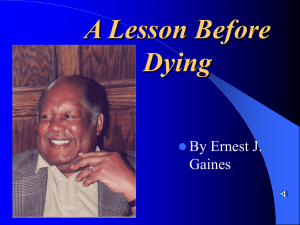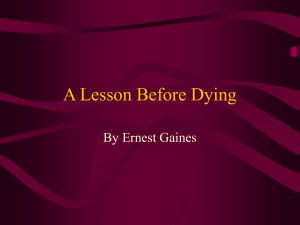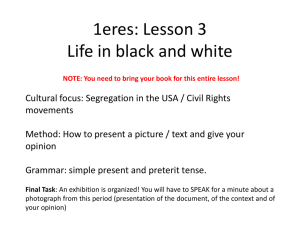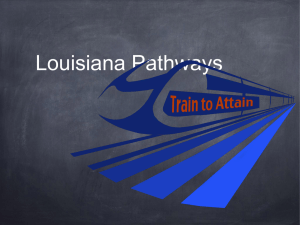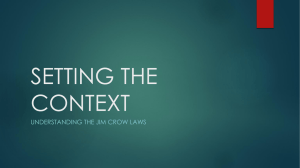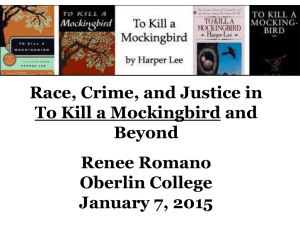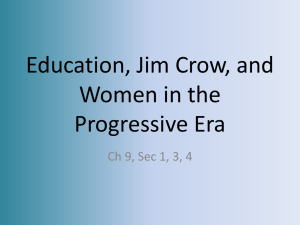A Gathering of Old Men
advertisement
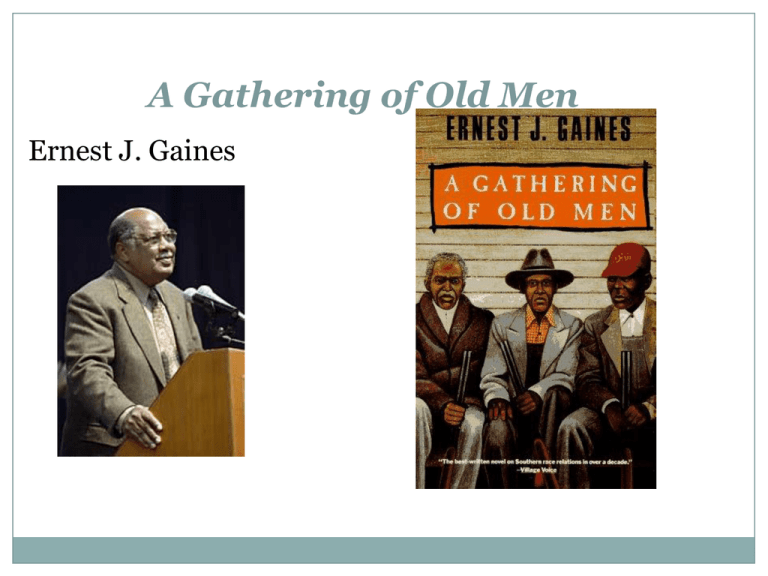
A Gathering of Old Men Ernest J. Gaines Ernest J. Gaines Biography Born Jan. 15, 1933 on River Lake Plantation , Point Coupee Parish , Louisiana Moved to Vallejo, Calif. in 1948 Attended junior college before being drafted into army in 1953-1955 Majored in English at San Francisco State College; graduated with a BA in 1957 Studied creative writing at Stanford 1958-59 first novel Catherine Carmier published in 1959 Continued to publish short stories and novels through 1971, when he published his most well-known novel, The Autobiography of Miss Jane Pittman, which received several awards and was made into a TV movie Biography cont’d A Gathering of Old Men was published in 1983 and made into a TV movie in 1987. Published seven novels and short story collections, received numerous honorary doctorates from outstanding universities such as Brown, Denison, Bard, and LSU In 1983 Gaines became a professor of English and writer in residence at the University of Southwestern Louisiana, in Lafayette, LA His novel A Lesson Before Dying published in 1993 won a National Book Critics Circle Award for Fiction and was nominated for the Pulitzer Prize. Novel Introduction AGOOM is about race Essential Questions: relations in the American South; it takes place over the course of one day in rural Louisiana. One white man has been shot dead and eighteen old, African-American men gather to each claim that he has killed the white man. What is the definition of a man? How does past treatment affect current behavior? Why are there still racial tensions in our country? When, if ever, will racial issues be resolved ? How does point of view affect a story? Jim Crow Laws The Jim Crow laws were state and local laws in the United States enacted between 1876 and 1965. They mandated de jure (concerning law) racial segregation in all public facilities in Southern states of the former Confederacy A "separate but equal" status for African Americans led to conditions for African Americans that tended to be inferior to those provided for white Americans. De jure segregation mainly applied to the Southern United States. Northern segregation was generally de facto (concerning fact). Jim Crow Examples/End Segregation of public schools, public places, and p Segregation of restrooms, restaurants, and drinking fountains for whites and blacks. The U.S. military was also segregated. Jim Crow laws were overruled by the Civil Rights Act of 1964 and the Voting Rights Act of 1965. Cajuns versus Creoles Cajuns - an ethnic group mainly living in the state of Louisiana. Descendants of Acadian exiles (French-speakers from Acadia in what are now the Canadian Maritimes). Cajuns make up a significant portion of south Louisiana's population, and have exerted an enormous impact on the state's culture. Cajun French is a dialect of the French language spoken primarily in the Acadiana region of Louisiana. Creoles -descended from the colonial settlers in Louisiana, especially those of French and Spanish descent. term was first used during colonial times by the early French settlers to refer to those who were born in the colony, as opposed to those born in the Old World. After the Civil War, some Creole scholars began to assert that the word Creole referred exclusively to people of wholly European descent. The term is now commonly applied to individuals of mixed-race heritage. Both groups have common European heritage and the traditional use of the French language and the continuing practice of Catholicism. Those of mixed race also have African and sometimes Native American ancestry. Traditional sharecropping declined after mechanization of farm work became economical in the mid20th century. As a result, many sharecroppers were forced off the farms, and migrated to the industrialized North to work in factories. Effects of Mechanization on the Sharecropper The story opens with Candy, a young woman who owns the land, sending Snookum on a errand to gather up the older men in the area to come to Mathu’s house , each bringing a 12 gauge shot gun and some shells. Each character has his or her own chapter to tell a part of the story and to claim credit for shooting a white man, long despised for his and his family’s abusive treatment towards the African-Americans in the town. Plan your chapter activities around the historical events and cultural messages in the subtext of the novel. Plan your chapter activities around the historical events and cultural messages in the subtext of the novel.
